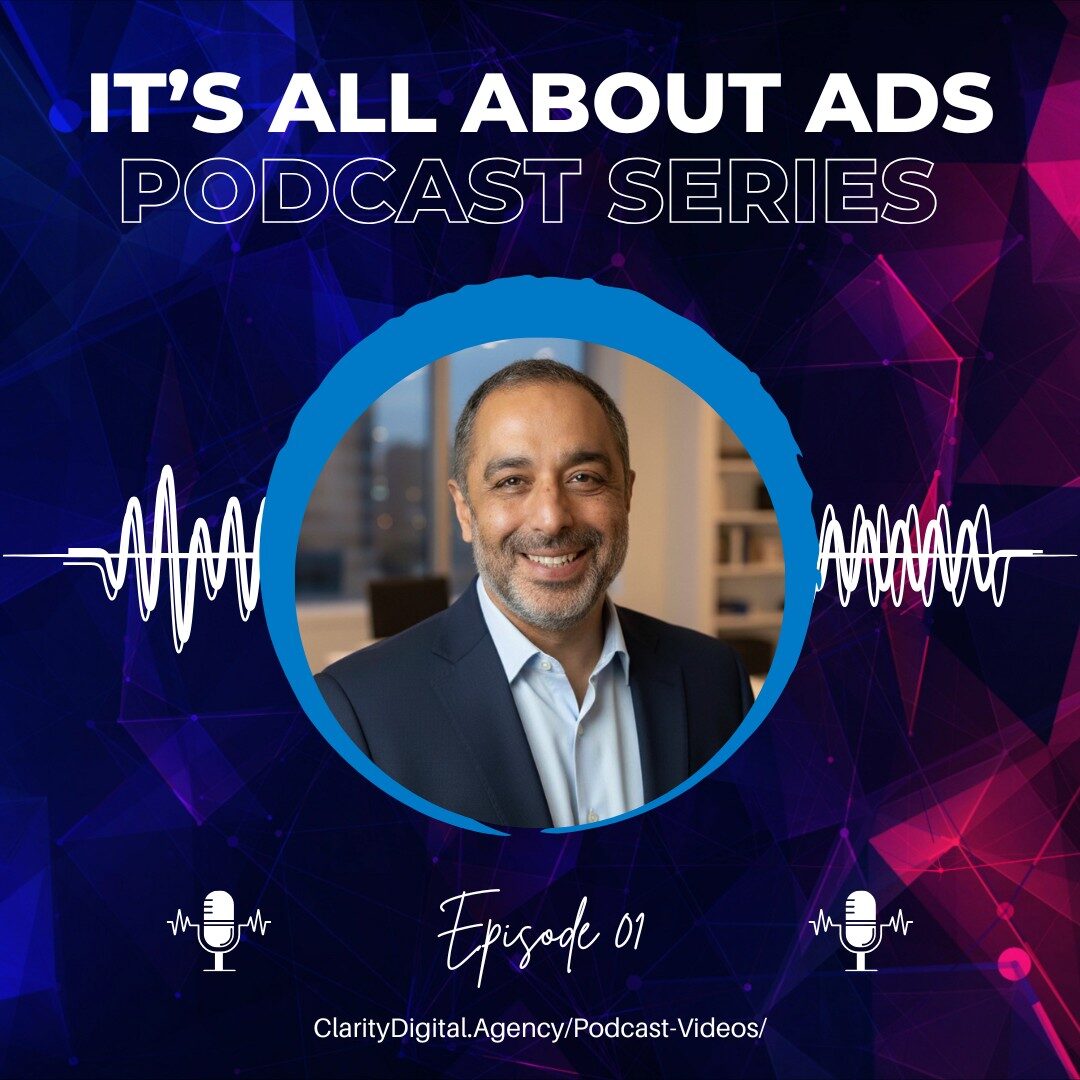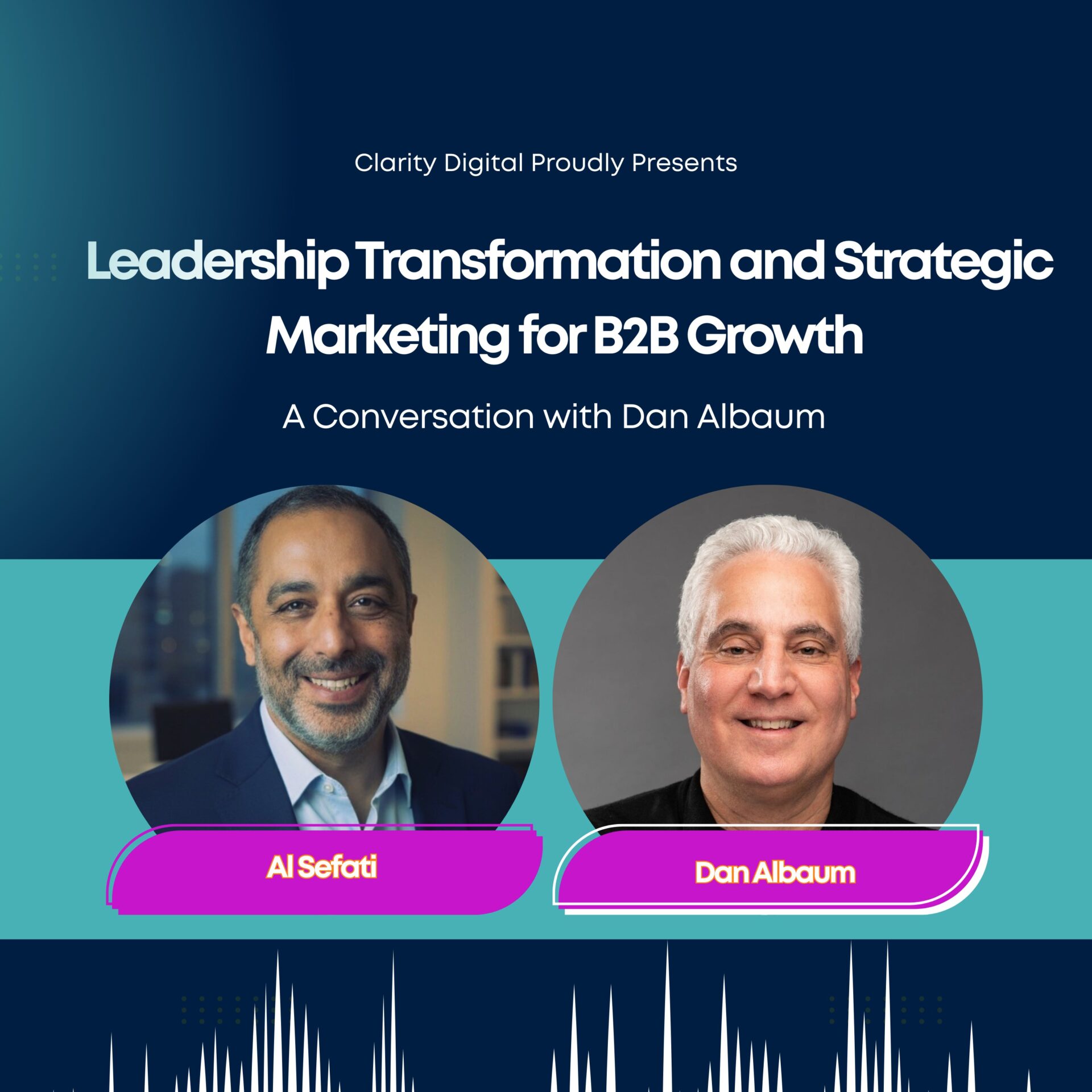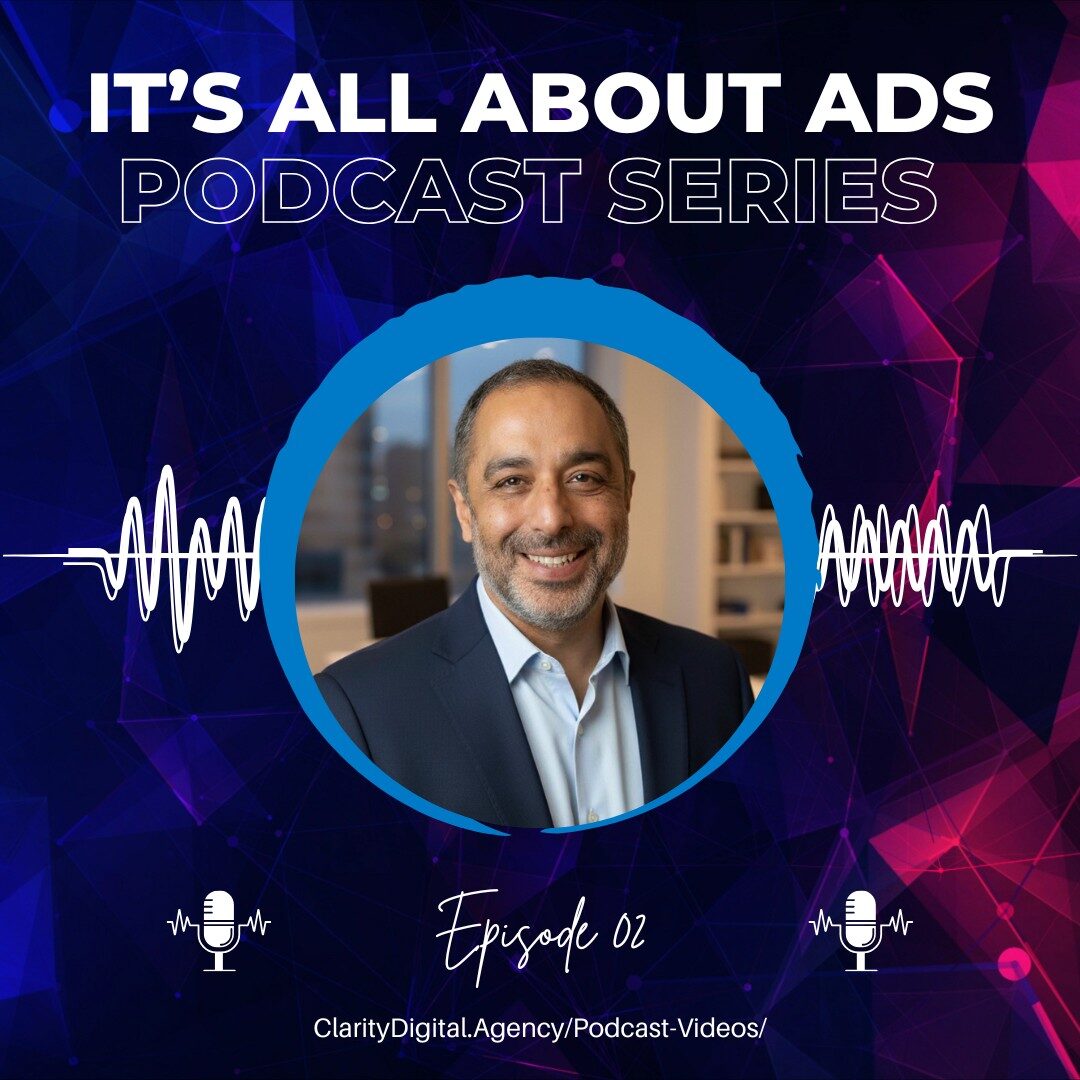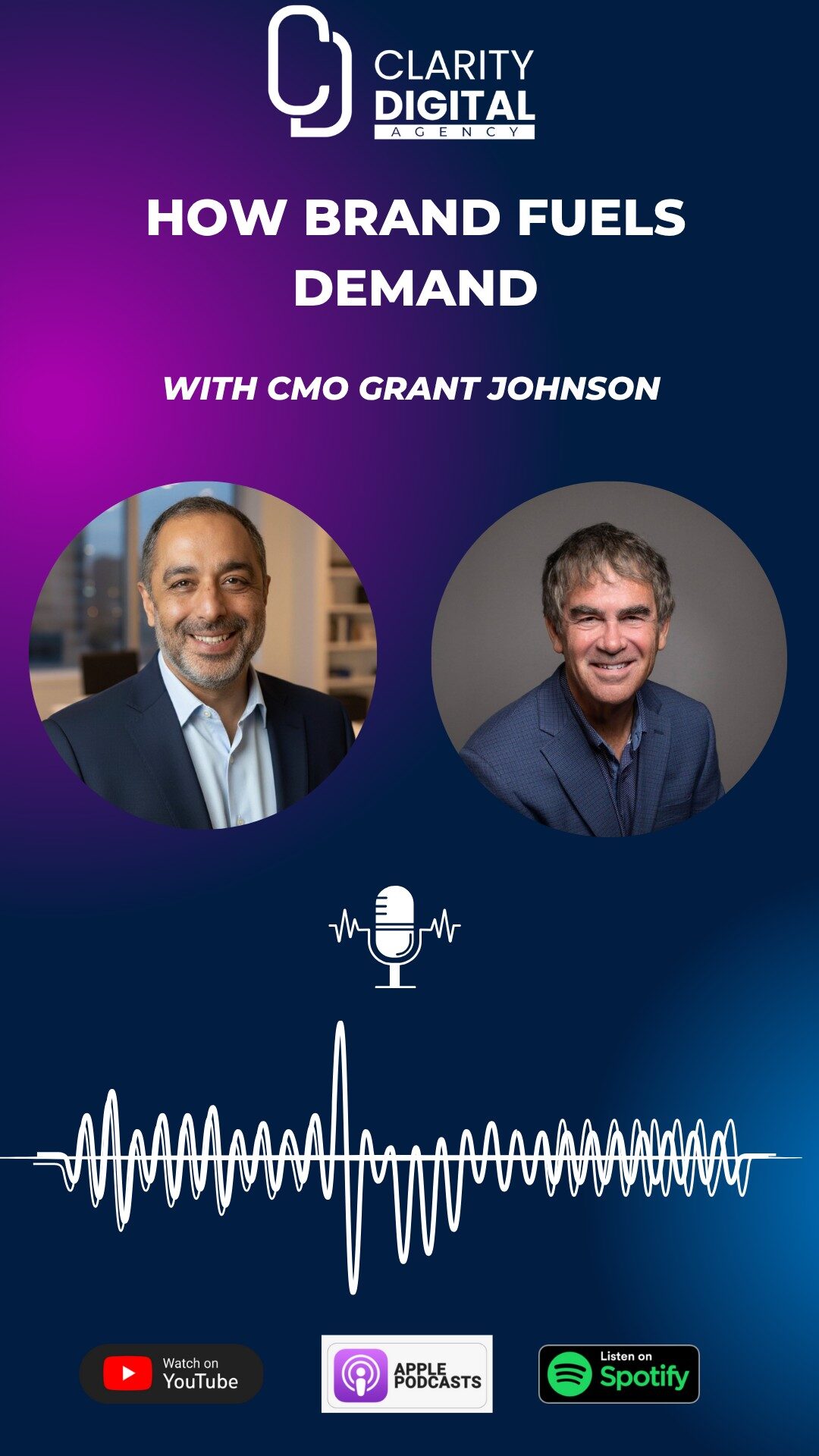Welcome to the first episode of It’s All About Ads, a new podcast series from Clarity Digital Pod. Hosted by Al Sefati, founder of Clarity Digital Agency, this series is built for marketers, advertisers, and business owners who are serious about scaling through digital advertising. In each session, we’ll break down the strategies, channels, data, and mindsets that actually move the needle in paid media.
In this kickoff episode, the conversation focuses on one critical message: you cannot scale without paid ads. From breaking down misconceptions about ROAS to evaluating Google’s automated bidding strategies, this episode covers everything business owners and digital advertisers need to know before launching or optimizing paid campaigns.
Whether you’re running Google Ads, Facebook Ads, programmatic, or a mix of everything, this is a no-fluff conversation grounded in real-world experience.
Watch the Episode
Why Paid Media Wins
The first episode opens with a hard truth. If you’re not advertising, you’re not scaling. Organic reach, referrals, and word of mouth can only take you so far. All the major platforms—Google, Meta, LinkedIn—are built to prioritize paid content. That means if you’re not paying, you’re not showing.
Advertising isn’t a tactic anymore. It’s infrastructure. Businesses that rely too heavily on organic channels quickly hit a ceiling, while their competitors keep growing through structured paid campaigns.
Paid and Organic Should Work Together
Organic marketing has value, especially at the top of the funnel. Content builds authority, SEO answers buyer questions, and email keeps you connected. But it doesn’t convert on its own. Organic methods are best used to support paid media by warming up audiences and increasing brand trust. Paid ads still close the deal.
For example, a user might find a brand through an organic blog post while researching. But when they’re ready to take action, it’s usually a paid ad that captures the conversion.
ROAS is Not the North Star
One of the biggest traps in advertising is chasing a 4x return from the start. That mindset limits growth. Campaigns should focus first on customer acquisition. A break-even return is still valuable if it brings in customers who will buy again, subscribe, or stay long term.
Many of the most profitable companies are willing to spend more than they make on the first sale because they know how to monetize that customer over time. The real metric to care about is Customer Lifetime Value (LTV), not just ROAS.
Pick the Right Channels Based on Your Funnel
Different platforms serve different stages of the funnel. Google Ads is best for bottom-of-funnel, high-intent traffic. Meta and LinkedIn are ideal for awareness and lead generation. But without a strong nurture process, leads from social channels rarely convert. That’s why matching platform to business model is critical.
Running Facebook Ads to drive eBook downloads can work if there’s a plan to move those leads into a sales funnel. Without that, campaigns will look like they underperform even if the ads are doing their job.
Don’t Stop After 30 Days
Cutting campaigns after 30 days is one of the biggest mistakes businesses make. Most campaigns need time to build data, refine targeting, and optimize creative. Especially with display or programmatic, the impact is rarely instant. The goal early on is to gather signals, test messages, and build momentum—not just immediate profit.
Local Services Ads: Good or Bad?
Local Services Ads (LSAs) on Google often show above search ads. They can be powerful for general service providers like attorneys, contractors, or home services. But for niche offerings or specialists, they can generate poor-quality leads. The results depend heavily on the business type and how LSAs are set up.
For businesses that qualify, LSAs can work well in tandem with standard search ads. Just be sure the setup is dialed in, and that someone is responding to leads quickly. Google rewards responsiveness.
Manual CPC and Exact Match Are Still Alive
Even with Google pushing automation, traditional tactics like manual CPC bidding and exact match keywords still have a place. They give advertisers more control over spend, cleaner data, and more insight into what’s actually driving performance.
Manual bidding is especially effective during the testing phase. Once a campaign is stable and profitable, automation can be layered on carefully. But jumping into broad match and auto bidding too early often results in wasted spend.
Don’t Trust Every Google Recommendation
Many advertisers let Google apply automated recommendations without reviewing them. This is risky. Broad match keywords, budget increases, and smart bidding strategies are often suggested in a way that prioritizes Google’s interests over yours.
Blindly accepting these changes can derail even well-performing campaigns. Every recommendation needs to be reviewed through the lens of your business model, goals, and actual lead quality.
Clean Conversion Tracking is Critical
Optimizing for conversions only works if the data is accurate. Too often, campaigns are built around form fills or calls that aren’t qualified. Job seekers, irrelevant inquiries, or spam leads can all be counted as conversions unless tracking is set up properly.
A campaign that reports 27 conversions may have zero sales. This is why real lead tracking—such as call quality, form context, and CRM integration—is essential to make decisions that actually impact revenue.
Google’s AI Max: Test Carefully
The episode closes with a preview of Google’s AI Max bidding system. Early results from the field show promise, but also come with major risks. In some tests, AI Max campaigns quickly spent through budgets while delivering questionable leads and inflated CPCs.
This feature may improve over time, but the advice is clear: test in a controlled environment, monitor closely, and avoid giving Google full control too early.
Episode Summary
The first episode of It’s All About Ads sets the tone for a no-nonsense series on digital advertising. Scaling a business today requires more than just running a few boosted posts or bidding on a couple of keywords. It demands strategic thinking, clean data, and a long-term approach to customer acquisition.
Key lessons from this episode:
- Advertising is the foundation for scale. Organic alone won’t cut it.
- ROAS is not the only metric that matters. Lifetime value should guide your spend.
- Match your channel to your funnel stage.
- Don’t kill campaigns too early. Give them time to optimize.
- Manual CPC and exact match still have value—especially early on.
- Be skeptical of Google’s auto-recommendations.
- Make sure your conversion tracking reflects real leads, not vanity metrics.
- AI tools like Google’s AI Max can help, but they must be tested carefully.
This is just the beginning of the series. Future episodes will dig deeper into platform changes, testing methodologies, and how advertisers can keep control in an increasingly automated ecosystem.





